Monday
Featured Stories, Sakyong and FamilyNepal Epilogue: The Shambhala Lineage Thangka
Presentation of the Shambhala Lineage Thangka auspiciously follows the Gesar of Ling empowerment ceremonies in Pharpeng, Nepal
by Walker Blaine
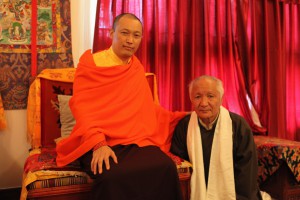 Last October was the joyous occasion of the Sakyong and his family receiving the complete transmission of His Eminence Namkha Drimed Rinpoche’s mind-treasure, or gongter, in Pharpeng, Nepal. This two-week ritual event was filled with empowerments, teachings, and a myriad of blessings. 2,000 people attended the Gongter at its peak. The ceremonies concluded with a wondrous feast for the eyes and heart—the dances of Gesar of Ling performed by the Sakyong Wangmo, her sisters, and a large troupe of Namkha Drimed Rinpoche’s disciples in the grand monastery courtyard at His Eminence’s seat in Nepal, Rigon Tashi Choeling Monastery.
Last October was the joyous occasion of the Sakyong and his family receiving the complete transmission of His Eminence Namkha Drimed Rinpoche’s mind-treasure, or gongter, in Pharpeng, Nepal. This two-week ritual event was filled with empowerments, teachings, and a myriad of blessings. 2,000 people attended the Gongter at its peak. The ceremonies concluded with a wondrous feast for the eyes and heart—the dances of Gesar of Ling performed by the Sakyong Wangmo, her sisters, and a large troupe of Namkha Drimed Rinpoche’s disciples in the grand monastery courtyard at His Eminence’s seat in Nepal, Rigon Tashi Choeling Monastery.
The morning after the dances was one of goodbyes and packing for the hundreds of guests staying in and around the monastery. As the sun warmed the green hills of Pharpeng there was excitement among the monastics because the Sakyong was formally bidding them farewell with a personal blessing and a gift of a new set of robes for each monk. It was a delight to see them emerging one by one—in order of height to facilitate easy sizing—from the doorway of the audience hall, each monk smiling and holding a crisp set of red robes.
The Shambhalians too were quite excited because after the Sakyong’s formal goodbyes to the monastics, Mr. Noedup Rongae, the master thangka painter who is a treasure to both the Shambhala lineage and the Buddhist world at large, had arrived to offer the Shambhala lineage thangka to Sakyong Mipham Rinpoche. A lineage thangka, or scroll painting, is a depiction of all the principal human and beyond-human figures that form the basis of a complete world of teachings within a tantric Buddhist tradition. This painting, which had been more than ten years in the making, was completed just before the start of the Gongter. The joy and curiosity to see this masterwork was palpable for everyone waiting to be called into the audience room after the thangka had been properly unrolled and blessed for its first viewing.
After the Sakyong, Namkha Drimed Rinpoche, and His Eminence’s two principal dharma heirs, Venerable Jigme Rinpoche and Lhunpa Tulku Rinpoche, chanted auspicious verses before the huge thangka, the Shambhala guests at the Gongter were invited to meet the painting. The room was often quiet because there was so much to take in. Ninety or more deities and dralas are depicted in the painting, including the Primordial Rigden and his consort, the first or primordial Sakyong, Shiwa Ökar, the rigden kings and queens, the dharmarajas and their queens, Gesar and the principal warriors of Ling, the eight great bodhisattvas, and the meditation deities, dralas, and protectors of Shambhala.
This new lineage object arrived at a remarkably auspicious time: the conclusion of the empowerments of Gesar of Ling, one of the main figures in the origin of the Shambhala terma. It also arrived at an incredibly auspicious place: Pharpeng, which the Sakyong described as a confluence of Tibetan and Himalayan culture, and a gateway between Tibet and the modern world. Pharpeng is also a place where Padmasambhava powerfully manifested enlightened activity, subduing many obstacles before establishing the Buddhist teachings in Tibet. It is also where the Sakyong has done numerous retreats and composed a number of key Shambhala texts. In this atmosphere of great meaning and blessing, the Sakyong humorously commented that it would be auspicious to receive this thangka anywhere, but receiving it at this particular time and place was very auspicious.
No one was prepared for the cultural, spiritual, and emotional impact of seeing such a powerful work of art. Time seemed to stand still as everyone witnessed the Sakyong making quiet aspiration prayers and tossing a pristine white khata, a ceremonial scarf of purity, onto the thangka as an offering to the living sacred images embodied in the painting. The room was saturated with a palpable recognition of witnessing a profound moment in our Shambhala history. Tears came to the eyes of many as they too offered khatas and said chants in homage to this profound work of art.
When we all had made our offerings, Mr. Rongae gently guided everyone through an overview of the vast array of figures in the painting. Afterward, the Sakyong gave a short talk to mark the occasion and to speak on the power and importance of the thangka. “This painting,” the Sakyong said, “will be a very important representation of the vision of the Dorje Dradül, the vision of the Shambhala terma, and the actual manifestation of the Rigdens.” He added that the thangka represented confidence and culture coming into being, and expressed his aspiration that anyone who saw the thangka could receive it well and be moved by it. This would indicate the actual blessing and descent of the Shambhala lineage.
Both Noedup and his father, Tenzin Rongae, served the first Sakyong. Noedup’s presentation of the thangka felt like a transmission of lineage occurring on many levels. Early in his remarks, the Sakyong said that the arrival of the thangka was a very important day in the life of Shambhala, “but also in the life of Mr. Noedup Rongae.” Just before warmly thanking Noedup at the end of his short talk, the Sakyong said, “I feel this is something my father would be very happy about,” and Noedup humbly replied, “Yes, it seemed he wanted these things.”
The Shambhala lineage thangka will be presented to the entire global Shambhala community on Shambhala Day when it is unveiled at the Boulder Shambhala Centre during the Shambhala Day Address. Please join us for this wonderful start to the New Year.
Walker Blaine is Master of Liturgies to Sakyong Mipham Rinpoche and a Herald of the Kalapa Court. He has studied and practiced the dharma in Shambhala for more than 30 years. Walker lives with his wife Patricia in Halifax, Nova Scotia.
To learn more about the Gongter, please read:
http://shambhalatimes.org/2015/11/15/sakyong-receiving-teachings-in-nepal/
http://shambhalatimes.org/2015/11/15/gongter-empowerments-begin/
http://shambhalatimes.org/2015/11/15/the-first-empowerments/
http://shambhalatimes.org/2015/11/15/gesar-heart-of-the-gongter-empowerments/
http://shambhalatimes.org/2015/11/16/sakyong-gives-talk-at-gongter/
http://shambhalatimes.org/2015/11/17/letter-from-the-sakyong-wangmo/
http://shambhalatimes.org/2015/11/20/the-blazing-warmth-of-generosity/
http://shambhalatimes.org/2015/11/24/grand-conclusion-of-the-gongter/
To learn more about Mr. Noedup Rongae, please visit his site:
http://shambhalaartschool.com/bio.html

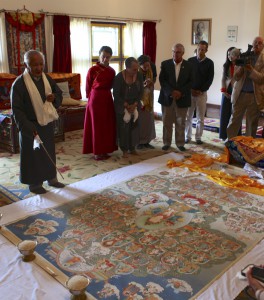
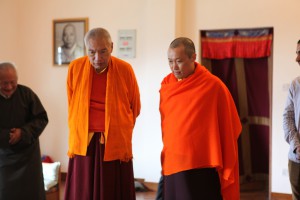
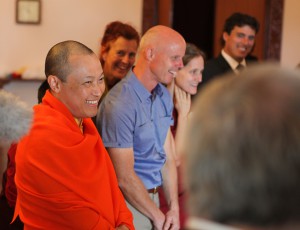
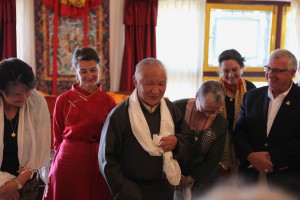
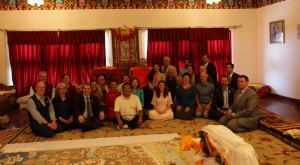
















Feb 11, 2016
Reply
I guess Phyllis was asking to have a closer look on the thangka – which would be truly wonderful.
Feb 10, 2016
Reply
Wonderful and auspicious start to the new year, indeed! We are so blessed by the Sakyong, his love and teachings, and now a family portrait! E ma ho! I look forward the time when we can hold a print of this precious Shambhala Lineage thangka in our hands. with love.
Feb 10, 2016
Reply
Editor’s note: a photograph of the thangka accompanies this story. See the second image embedded in the text.
Feb 10, 2016
Reply
Is it possible to show a photograph of the thangka?
Feb 10, 2016
Reply
Where can prints of the new thangka be purchased?
Feb 9, 2016
Reply
Will this wonderful gift to us all be permanently housed at the Boulder Shambhala Center or will it eventually be moved to Halifax?
Feb 8, 2016
Reply
How wonderful! Thank you for sharing the exciting news. Brings tears of joy to the eyes!
Cheerful Losar to all!